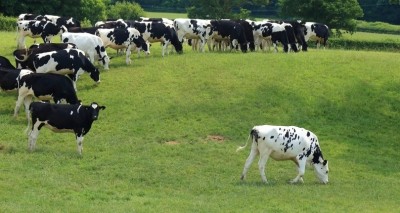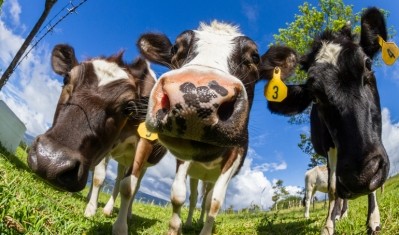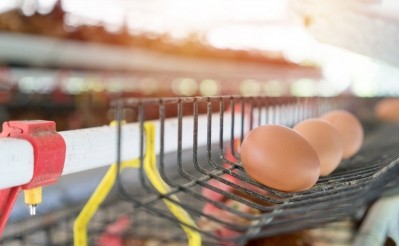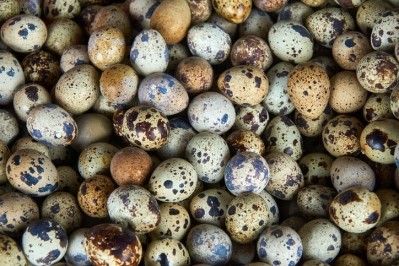Researchers look at diet adjustments for older layers with heat stress
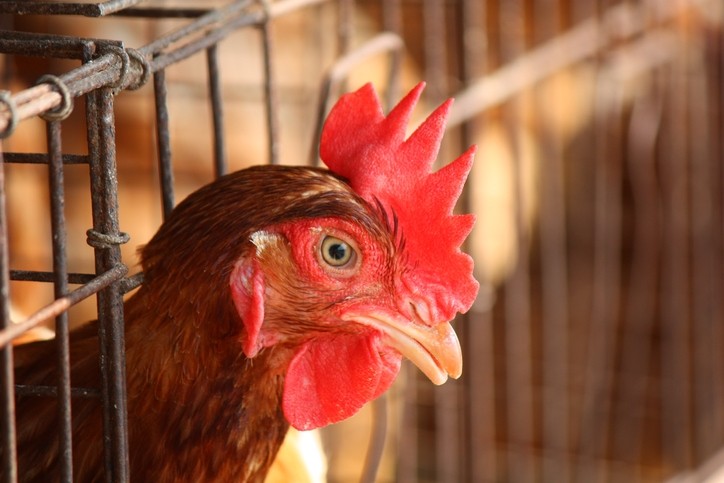
A team of researchers in Brazil explored the use of grape pomace flour (GPF) in the diets of older laying hens facing a heat stress challenge.
They published their research in the Journal of Thermal Biology.
“Our hypothesis is that GPF added in the diet of laying hens may increase the serum levels of antioxidants, and consequently, improve egg quality and aid egg conservation during storage” they said. “Therefore, the aim of this study was to evaluate whether the addition of GPF in the diet of laying hens at the end of their productive cycle could exert benefits on their health, performance and egg quality.”
The researchers found that adding amounts of grape pomace to the layer’s diet improved feed intake and the percentage of eggs laid. Stored eggs from hens receiving the supplement diets also had higher antioxidant capacity and less lipid peroxidation compared to eggs from chickens on the control diet.
“The use of GPF in the diet of laying hens promoted enhanced productive efficiency and stimulated the antioxidant defense mechanism system, exerting beneficial properties on animal health, under conditions of heat stress,” they said. “Also, GPF was able to reduce egg lipid peroxidation and to increase antioxidant levels, contributing to improved internal egg quality, as well as to maintain yolk pH of stored eggs similarly to fresh eggs.”
“Overall, the use of GPF for laying hens at the end of the productive cycle exerted benefits to development, egg quality and animal health,” they added.
Managing heat stress and bird age
Chronic heat can be a stressor for laying birds, especially toward the end of their productive cycle, the researchers said.
“The end of the productive cycle of egg-laying hens is associated with some difficulties problems, mainly linked to increased egg size, in addition to lower deposition of calcium as a consequence of increased shell surface, which impairs egg-peel strength,” they said. The quality of fresh eggs is not altered by hen age, but the reduced calcium intake has been linked to a higher risk of eggshell breakage.
Following several days of storage at room temperature, egg quality also was negatively affected compared to fresh eggs, they said.
Alternatives are needed to reduce the issues found at the end of a bird’s production cycle and to support egg quality, the researchers said. Finding “natural products” that would boost egg quality and bird health also is of interest.
Past research found that adding curcumin could improve egg quality through 21 days of storage, they said. Supplementing the diets with essential oils and vitamin E also was reported to support egg quality by lowering oxidant levels.
Why add grape pomace flour?
Grape pomace flour is removed from the skins and seeds of grapes and can be collected from the grape industry, the researchers said. The residue is known to be high in antioxidants.
“GPF is composed by phenols, flavonoids, anthocyanins and catechins, as well as other compounds well-known by its antioxidant potential, such as resveratrol, luteolin, quercetin and kaempferol,” they said. “In this sense, the use of resveratrol in the diet of laying hens exerted positive effects on their performance and in enzymes linked to the antioxidant defense system (Feng et al., 2017).”
Extraction costs make the use of isolated compounds found in grapes “unfeasible,” they said. However, adding GPF to layer diets could be an option – particularly in countries that have a wine production industry, which provides grape residue at a lower cost.
Feeding trial details
In the feeding trial, 74-week-old laying hens were given one of four diets for a period of 35 days, the researchers said. The grape pomace flour used was commercially available and the level of resveratrol included was determined to be 58.5mg per g of GPF.
A corn-soybean meal diet was used for a control diet (T0) and that diet was supplemented with three levels of GPF at 1% (T1), 2% (T2), or 3% (T3), they said. Temperatures during the trial ranged from 29c to 37c (84 to 98.6f).
The number of eggs laid per repetition was recorded daily and the percentage of laid eggs per diet and egg mass were calculated, they said. Eggs were weighed on day 33, 34 and 35 of the trial to establish an average egg weight.
Feed consumption was established to determine feed conversion per kg of eggs and per dozen, they added. Blood samples were taken for serum biochemical, and oxidant and antioxidant enzyme activity analysis from a selection of birds on days 0 and 35.
A selection of eggs per repetition was collected on days 33, 34 and 35, the researchers said. Eggs gathered on day 35 were processed immediately to provide “fresh egg” results, and eggs collected on days 33 and 34 were examined after 21 or 30 days of storage.
Eggs were checked for specific gravity, peel strength, albumen height and pH along with determining the yolk index, luminosity and pH, they said. Fatty acid levels were checked in both the feed and the eggs.
Lipid peroxidation in the egg yolk was established along with the decomposition of lipid peroxides, they said. Antioxidant capacity against peroxyl radical (ACAP) also was determined.
Results
Laying hens receiving supplemented diets had higher daily feed intake compared to control group birds, the researchers said. Birds getting the largest amount of GPF had higher feed conversion per mass of eggs than the control, and those on the T1 diet had a higher percentage of laid eggs.
“The addition of GPF in the diet for laying hens at the end of the productive cycle can be beneficial for animal health and exerted positive effects in their performance and egg quality,” they said. Overall, the researchers recommended adding 1% GPF.
No chemical differences were found in the fresh eggs regardless of bird diet, they said. “Similarly, there were no differences between groups regarding peel strength, luminosity (L+), red intensity (a+), yellow intensity (b+), eggshell thickness, and percentage of albumin, yolk and shell in stored eggs,” they added.
However, the specific gravity declined, egg yolk pH and albumen pH were lower and the yolk index dropped in eggs laid by birds on the supplemented diet following 30 days of storage compared to eggs from control group birds, they said.
After 30 days, caproic acid levels were lower in eggs from hens on the supplemented diets, the researchers said. However, there were no differences for the sum of saturated fatty acids or the majority of the fatty acids examined.
Fresh eggs from birds on the T1 had more linoleic acid than those in the control, although eggs from T3 group birds had less gadoleic acid and more eicosadienoic acid and docosadienoic acid than control group eggs, they said. The sum of monounsaturated fatty acid content also increased, following storage, in eggs from birds on the T3 diet.
Control group bird eggs had higher thiobarbituric acid reactive substances (TBARS) in fresh eggs than those from birds receiving T2 and T3 diets, and in stored eggs from birds on all the supplemented diets, they said. But, ACAP levels were increased in stored and fresh eggs from birds on the supplemented diets.
“Serum levels of total protein and globulins were lower in the groups T1, T2 and T3 compared to the group T0 on day 35 of the experiment,” the researchers said. “No significant difference was observed between groups regarding serum levels of albumin, triglyceride, uric acid and cholesterol.”
On day 35, serum glutathione peroxidase (GPx) and superoxide dismutase (SOD) levels were higher for all supplemented birds, and those on the T2 diet, respectively, when compared to birds in the control, they said. ACAP levels were increased for birds on the T2 and T3 feeds.
Source: Journal of Thermal Biology
DOI: doi.org/10.1016/j.jtherbio.2019.01.003
Title: Addition of grape pomace flour in the diet on laying hens in heat stress: Impacts on health and performance as well as the fatty acid profile and total antioxidant capacity in the egg
Authors: J. Reis, R. Gebert, M. Barreta, M.Boiago, C. Souza, M. Baldissera, I. Santos, R. Wagner, L. Laporta, L. Stefani, A. Da Silva
